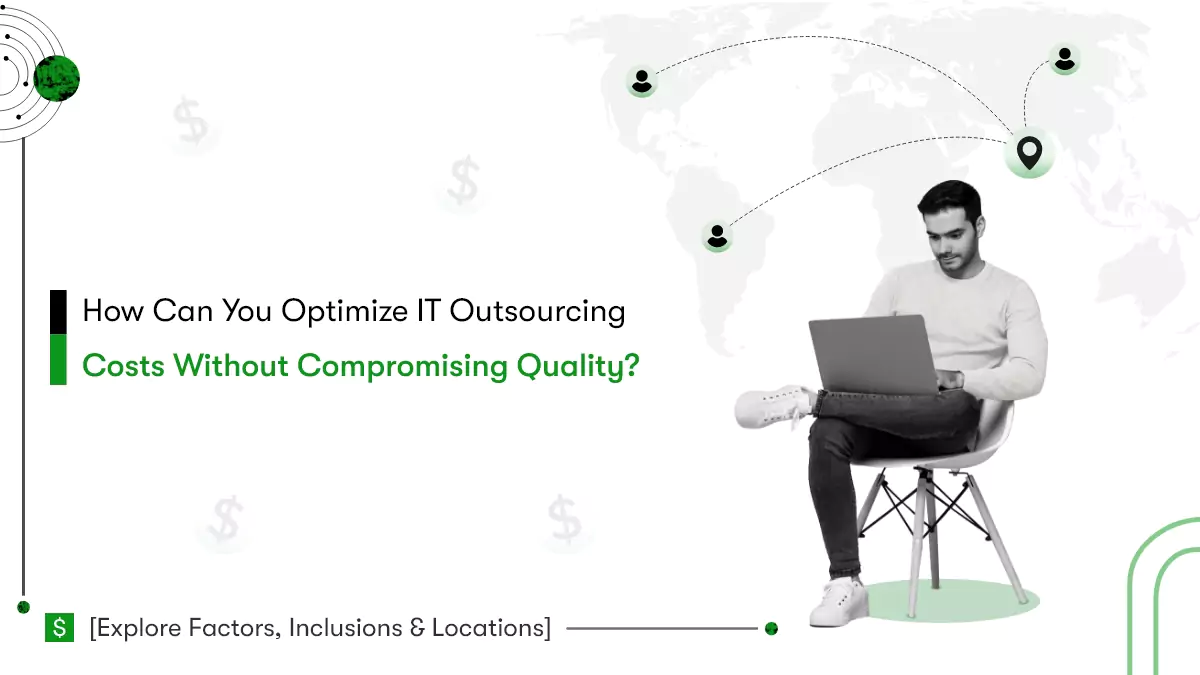The banking and finance sector is one of the most competitive in the world. The financial services industry has a long history of utilizing technology to increase efficiency, reduce costs and improve service. Call it a FOMO or the need for a competitive edge, CTOs in the BFSI are looking for tech up-gradation that drives better sales and productivity. And RPA is just the ticket.
Robotic process automation (RPA) in the Banking Industry has become an effective and labor-saving way to automate repetitive tasks. That would otherwise take up valuable employee time. RPA solutions can help banks and financial institutions increase their sales by automating routine tasks such as data entry, document processing, customer service interactions, loan application processing, and more.
RPA can also help reduce waste in the financial services sector by eliminating manual processes that are prone to error. The technology has been used effectively in industries such as insurance, where it helped cut down on paperwork errors that lead to payouts being delayed or denied altogether.
In addition, RPA solutions are resulting in improved customer service. In contrast, allowing staff members to focus on more complex tasks like providing personalized advice or servicing clients within tight deadlines.
The automation potential of all finance operations processes was analyzed in a McKinsey research report that claimed that, on average, 42% of finance operations could be fully automated.
On the other hand, Gartner reported that,
Around 80% of finance leaders have already either implemented or are planning to implement RPA.
Want to know what benefits Robotic Process Automation adopters reap and how to implement RPA in finance and banking organizations? Stay tuned!

Benefits Of Robotic Process Automation Vendors in the BFSI Should Reap
1 Save time from doing repetitive tasks with RPA
Tons of the processes within financial institutions are repetitive and hardly need any special skill. A machine could do these tasks, but they’re currently being done by hand. This is not only inefficient, but it also leads to errors and inconsistencies. Automating these processes would free up time and resources that could be better used elsewhere. RPA would also allow banks to focus on their core activities, reducing processing costs by 30% to 70%.
2 Drop the fear of error when RPA has by your side
Manual data entry more often than not appears as a productivity killer and for a good reason. Even the best employee makes occasional mistakes that can impact end-user satisfaction and accuracy.
Automation can help to enrich accuracy and efficiency by eliminating human error. RPA systems can automatically fill in already available information, cutting off the employee input. As a result, this improves overall accuracy and efficiency.
3 Growing with legacy data
By relying on both old and new data, banks and financial services companies can more easily overcome the procedural gaps with RPA implementation. Having this information available and in one system enables banks to generate reports more quickly and of better quality. It is something that is necessary for companies looking to expand.
4 Operations Scalability
Robots are highly scalable, which is extremely beneficial for businesses in the BFSI. Adding more robots and responding quickly to any situation allows them to manage high volumes of work during their busiest periods.
Consequently, RPA implementation can help banks focus on pioneering innovative strategies for growth. Given that RPA automates mundane tasks that would otherwise exhaust employees. But now, they can work on more strategic initiatives to achieve their KPIs.
5 No need for new Infrastructure
RPA in the finance sector can be implemented with minimal new infrastructure, in contrast to traditional IT projects, which often require new infrastructure to be built before the project can begin. Banks can thus begin to enjoy the benefits of RPA with little investment.
The primary goal when implementing RPA is to not only build upon the existing legacy infrastructure. But to use it in a way that allows the player to capitalize on the power and flexibility of this system.

How do Financial Institutions Use Robotic Process Automation Strategically?
The benefits are numerous. However, what exactly is Robotic Process Automation? How does it help financial institutions with capital gain and beat the competition you may ask. On that note, Forbes councils member Cristian Paun states,
“Initially, we had a technology called RDA (robotic desktop automation), where a human-assisted a robot, and the two each completed tasks of a particular process. While this produced benefits, we were still unable to achieve full end-to-end process automation. Eventually, the technology evolved to the next level in the form of RPA, with robots being capable of fully automating a process without any human interactions.”
The purpose of RPA, or robotic process automation, is to automate business processes through technology governed by business logic and structured inputs. RPA tools allow companies to configure software or ‘robots’ to carry out applications. For example, transaction processing, data manipulation, response triggering, and digital system communication.
Simply put, RPA is a form of artificial intelligence that can automate simple tasks so that humans can focus on more complex, high-value matters. Now, let’s see ways to use RPA in Financial and Banking firms and automate time-consuming tasks smartly and cost-effectively.
Customer onboarding
RPA can make the customer onboarding process in banks much easier. It can automate capturing data from KYC documents using optical character recognition (OCR). This is helpful because the process often takes a long time due to the need for manual document verification.
Once the data has been collected, it is compared to the information that the customer submitted on the form. The data is automatically fed into the customer management portal if there’s no difference between the two.
Thus, RPA automation can help streamline the customer onboarding process by reducing manual errors and saving time.
Compliance
The cost of compliance has been a heavy burden for all financial service providers. Deloitte research reported that “risk mitigation and cost of compliance over the last eight years have discarded almost all discretionary funding available to firms. Compared to pre-financial crisis spending levels, operating costs spent on compliance have increased by over 60% for retail and corporate banks.”
RPA, on the contrary, allows financial institutions to detect, investigate, and respond to regulatory violations at an unprecedented scale and speed. Ultimately, it reduces the regulatory burden, cost, and risk associated with it, enhancing their overall regulatory compliance strategy.
Because RPA software can be programmed to carry out a wide variety of compliance-related tasks, it has the potential to replace many of the manual processes that banks currently use to comply with regulations.
Read Also: What Are The Different Types Of Fintech, and How do They Make Money?
Loan Application Processing
RPA has the potential to reduce the cost of loan application processing by automating the steps that humans perform traditionally. For example, RPA can perform automatic fraud detection by comparing the applicant’s details with the information captured during the KYC process. This helps banks prevent potential fraud, which could result in a higher level of customer satisfaction. It also saves banks time and money, eliminating the need to perform manual background checks.
Anti-money Laundering (AML)
According to a report by Booz Allen Hamilton, anti-money laundering analysts spend most of their time (75%) on data collection and a little under a fifth of their time (15%) on data entry and organization. Only 10% of their time is spent on analysis. The automation of the AML investigation process through RPA is one of the best examples of how RPA can help banking institutions.
The process is highly manual and can take up to 40 minutes to investigate a single case, depending on the complexity and availability of information in various systems. RPA can help banks save time and resources by automating this rule-based process, reducing turnaround time by 60%.
RPA easily automates these repetitive and rules-based tasks, enabling more than a 60% reduction in process turnaround time.
Customer Service
It can be challenging for banks to give timely responses to the numerous queries they get every day on different topics, like account info, application status, and balance info. However, Robotic Process Automation (RPA) for Financial Services can alleviate this pain point to a significant degree.
For example, having bots can help banks with things like routine questions about account statements and transactions can free up a lot of time. If something requires human judgment, the bot can escalate it to the right human. This way, banks and financial institutions can keep assisting their customers on time.

Leading Banking and Financial Institutions Using RPA
KeyBank
When the COVID-19 pandemic hit and KeyBank’s teams were forced to work off-site, the company turned to RPA to help manage the increasing call volumes and workload. KeyBank is a leading commercial bank in the US with a customer base including retail, small business, corporate, and investment clients.
RPA helped KeyBank respond to the challenges of the pandemic without having to add to its staff. By partnering with Billtrust and applying RPA, Bank has automated invoice delivery and receivables processing. This includes making electronic invoices with Quantum Payment Cycle Management Billtrust. Implementing RPA has also allowed Keybank to optimize its accounts receivable.
Dai-ichi Life Insurance Company
The third-largest life insurer in Japan by revenue, Dai-ichi Life Insurance, was juggling various inefficient manual administrative processes, such as managing insurance purchases, contracts, payments, and other clerical processes.
So, in 2017, Dai-ichi Life decided to give RPA a try. They made rules and tested them, and by 2018 RPA was being used for 460 tasks in 36 departments. This strategic automation has helped the company save 132,000 hours a year ever since.
MyState Bank
An Australian financial group, MyState Bank, set a goal to enhance its efficiency by automating tasks and reducing costs and errors. Their objectives also included maintaining compliance and brushing up on the overall customer experience and satisfaction.
By automating the process using RPA, the bank achieved the perfect balance between effort and ease. It was an ideal pilot, supporting their ruled-based and repetitive tasks. And the turnaround time was reduced to the same day, making it a huge success.
What are you waiting for? Start automating your processes now!
RPA has the potential to dramatically lift the customer experience for banks and other financial institutions. Instead of spending massive amounts of time and money on traditional human-intensive tasks, such as answering phone calls, writing emails, and performing basic data entry, financial organizations can use RPA to perform much more complex tasks.
The tasks range from calculating a customer’s loan repayments, identifying potential fraud, or making complex financial decisions. You name it. On the other hand, Robotic Process Automation has the potential to make banking services much more convenient for customers.
So, let’s say a positive decision on robotization in the bank has become crucial. At the same time, setting basic rules and steps for implementation are equally vital to make a banking RPA project successful. If you want to strategize Automation for your bank or financial institution, consult our team of experts.











 Contact Information
Contact Information